History by Ages
- Opening the Country, Starting Business
- The Industrial Revolution in the Meiji and Taisho Periods
- Into the Showa Financial Depression and the Great Depression
- To Postwar Reconstruction and High-Speed Economic Growth
- The 1973 Oil Crisis and the End of Rapid Economic Growth
- Stronger Yen and the Rise and Fall of the Bubble Economy
- The Acceleration of Globalization
Opening the Country, Starting Business
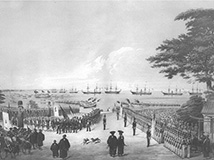
Commodore Perry’s arrival in Japan forced the country to reopen its ports to foreign trade for the first time in roughly 200 years. Soon after that, Iwai & Co. in Osaka and Suzuki & Co. in Kobe were established. Their trading brought them into contact with advanced technologies from abroad, allowing them to see how Japan had been left behind by the rest of the globe’s industrial revolution. These companies thus vowed to revitalize Japanese industry and raise Japan’s standing abroad. Cotton spinning—initially a state-owned industry—grew to become Japan’s largest business sector at this time. Searching for a way to procure cotton without relying on foreign trading companies, the merchants of Osaka banded together, eventually establishing Japan Cotton Trading Co. Since the beginning of Japan’s modernity, Sojitz’s forebears have always acted in favor of the national interest.
Read about thisperiod in detail
The Industrial Revolution in the Meiji and Taisho Periods
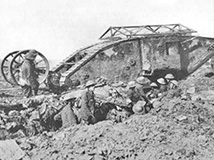
Following the Sino-Japanese and Russo-Japanese Wars, Japan transformed from a country primarily focused on light industry to a heavy and chemical industries country. A large volume of orders poured into Japan upon the outbreak of World War I, greatly hastening Japan’s industrial revolution. At this time, Japan Cotton Trading Co. procured cotton for Japan’s spinning industry and helped to export their finished products. Iwai & Co. advanced their plans to produce imported items domestically, establishing a group of manufacturing companies which would later be known as “Saishokai.” Suzuki & Co. established at least 80 companies and rapidly grew to become Japan’s premier trading company. All of these companies helped to lay the foundation for Japan’s emergence as the trading nation it is today.
Read about thisperiod in detail
Into the Showa Financial Depression and the Great Depression
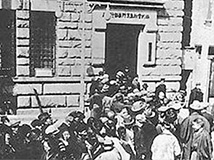
The business environment continued to deteriorate following World War I, with Japan hit by both a postwar depression and later, the Great Kanto Earthquake. In the face of the Showa Financial Depression, Suzuki & Co. fell into bankruptcy. The company’s 39 remaining members came together to establish Nissho Co., Ltd. following the firm’s collapse. Japan Cotton Trading Co. also suffered under the Great Depression and were pressured to reduce capital and restructure their business. Iwai & Co. managed to ride out these difficulties through sound management achieved through Zen meditation.
Read about thisperiod in detail
To Postwar Reconstruction and High-Speed Economic Growth
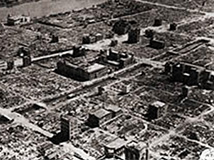
As soon as World War II ended, trading companies prepared to restart foreign trade. Despite the restrictions on overseas travel, they traveled around to meet with their prewar business partners as soon as they could, and through trade, were able to contribute to Japan’s postwar recovery. Once Japan entered its period of rapid economic growth, trading companies were called upon to secure raw materials such as iron ore, as well as nuclear power and other energy sources. At the same time, these companies scrambled to make inroads for Japanese-made products in overseas markets. Rising demand during this period of high-speed growth made it an excellent opportunity to broaden the scope of Japanese business to include aircrafts, gas stations, fashion, real estate, lumber, plastics, leasing, and other industries.
Read about thisperiod in detail
The 1973 Oil Crisis and the End of Rapid Economic Growth
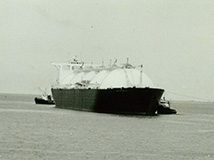
The 1973 oil crisis created greater desire to find a stable source of energy for Japan, leading to an expansion of the nation’s LNG, coal, and nuclear energy businesses. A plant and infrastructure export boom also occurred at this time, centered on the Middle Eastern countries that were rich with oil money following the crisis. Japanese companies also played a leading role in negotiations with Communist states such as China, the Soviet Union, and Poland, actively contributing to their national projects. Capital liberalization invigorated business development in Japan through joint ventures with foreign enterprises.
Read about thisperiod in detail
Stronger Yen and the Rise and Fall of the Bubble Economy
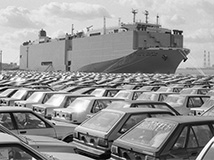
The Plaza Accord gave rise to stronger yen which helped to accelerate Japanese companies’ overseas expansion. Alongside these companies, sogo shosha also moved their production bases overseas and worked to hire local people to handle regional production. Following the Vietnam War, our company became the first Japanese firm to set up a liaison office in Vietnam and contributed to the establishment of the nation as it is today. The company also financed the development of oil-producing countries such as Brazil and Angola and began to pursue further ways to create value—not just for Japan, but for the world at large.
Read about thisperiod in detail
The Acceleration of Globalization
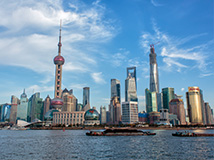
In 2001, China joined the WTO. The rapid growth of emerging nations followed, starting with the BRICs. Resource prices soared, sparking competition over a variety of resource commodities, including foods. For sogo shosha, securing resources for Japan became a mission of great social importance. The expanding wealthy and middle classes in emerging countries brought growth in consumer markets such as the automobile market. The need for infrastructure such as electricity and railways also increased. Heightened environmental concerns during this time also marked the birth of new business areas such as renewable energy.
Read about thisperiod in detail
